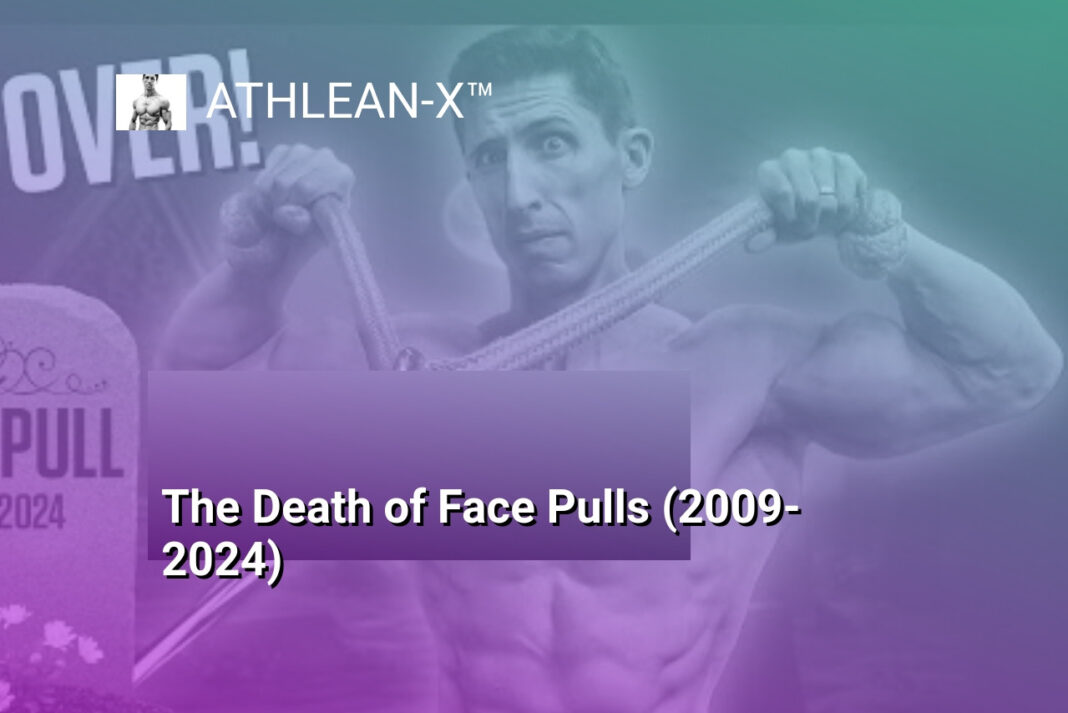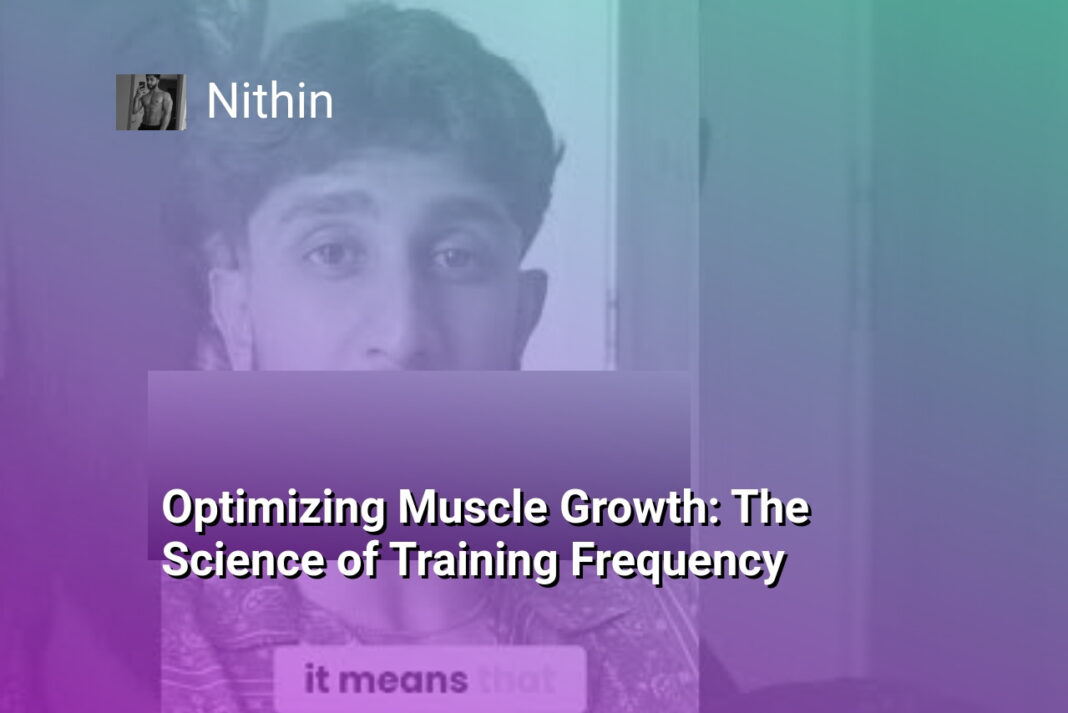The Bottom Line:
- The main theme of the text is the effectiveness of long-length partial exercises, such as face pulls, for muscle building compared to full range of motion exercises.
- The author argues that long-length partial exercises are a form of eccentric training, which is a known stimulus for muscle hypertrophy, but cautions that the benefits may be overstated in some research studies.
- The author suggests that the increased muscle gains from long-length partials may be due to the higher intensity of training, as they are often used after reaching concentric failure, rather than the partial movement itself.
- The author emphasizes that face pulls, while traditionally considered a corrective exercise, can also be an effective muscle builder, and may contribute to improved performance on larger compound exercises.
- The author encourages the reader to consider the bigger picture and not solely focus on long-length partial exercises, as they may be missing out on the benefits of progressive overload and heavy compound movements.
The Importance of Applying Science to Fitness Information
Maximizing Muscle Growth: The Power of Ecentric Training
The key to effective muscle-building lies in understanding the science behind fitness information. While the concept of “long length partials” has gained popularity, it’s important to recognize that these are a subset of Ecentric training, a well-established stimulus for hypertrophy. Ecentric training, which involves the controlled lowering or lengthening phase of an exercise, has been shown to be one of the three primary drivers of muscle growth.
Debunking the Hype: Evaluating the Effectiveness of Long Length Partials
Research studies have indeed demonstrated the potential benefits of long length partials, suggesting they can lead to 5-10% greater muscle gains compared to full range of motion exercises. However, it’s crucial to consider the context in which these studies were conducted. Often, long length partials are employed at the end of a set, after the individual has already reached concentric muscle failure. In this scenario, the increased muscle growth may be attributed to the higher overall training intensity, rather than the long length partials themselves.
Prioritizing Compound Exercises and Addressing Weak Links
While long length partials can be a valuable tool, it’s important not to lose sight of the bigger picture. Compound exercises, such as the deadlift, should remain the foundation of any effective muscle-building program. Exercises like the face pull, often considered “corrective,” can actually play a crucial role in enhancing performance on these compound lifts by addressing weak links in the kinetic chain. By strengthening these supporting muscle groups, the face pull can lead to significant improvements in overall strength and muscle development.
The key takeaway is that applying scientific principles to fitness information is essential for maximizing muscle growth. While the allure of “long length partials” may be tempting, it’s important to consider the broader context and the role of Ecentric training, compound exercises, and addressing weak links in the kinetic chain. By adopting a holistic, evidence-based approach, individuals can unlock their true muscle-building potential.
Evaluating Exercises: Lap Pull-Down and Long-Length Partials
The Versatility of Face Pulls: Muscle Building and Performance Enhancement
The face pull, often considered a mere corrective exercise, can actually be a powerful muscle-building tool in its own right. While the research on long-length partials has gained significant attention, it’s important to consider the broader benefits that exercises like the face pull can offer.
Eccentrics and Long-Length Partials: A Closer Look
The appeal of long-length partials lies in their ability to create high levels of eccentric tension, a known driver of muscle hypertrophy. However, it’s crucial to understand that long-length partials are a subset of eccentric training, which has been a well-established stimulus for growth. The research highlighting the benefits of long-length partials should not be dismissed, but it’s important to recognize that these findings are not entirely novel.
Balancing Specificity and Versatility
While the face pull may not be the ideal exercise for maximizing long-length partials, it offers other valuable benefits. The face pull can be a powerful muscle builder in its own right, contributing to the development of the upper back musculature. Moreover, it can serve as a “stage setter” for larger compound exercises, such as the deadlift, by addressing weaknesses in the kinetic chain. This versatility can lead to significant performance improvements on the big lifts, ultimately driving greater muscle growth.
The key is to strike a balance between the specificity of long-length partials and the broader benefits of exercises like the face pull. While the research on long-length partials is compelling, it’s important not to become overly fixated on a single approach. Incorporating a variety of effective exercises, including the face pull, can lead to more well-rounded muscle development and enhanced performance on the big compound lifts.
The Effectiveness of Face Pulls for Muscle Building and Performance
The Importance of Face Pulls for Muscle Building and Performance
The face pull is a highly effective exercise that not only builds muscle but also enhances overall performance. While it may not meet the criteria for an optimal long-length partial exercise, the face pull offers a unique set of benefits that make it a valuable addition to any well-rounded fitness program.
Addressing Weak Links in the Kinetic Chain
One of the key advantages of the face pull is its ability to address weak links in the kinetic chain. By strengthening the upper back and shoulder muscles, the face pull can amplify an individual’s performance on larger compound exercises, such as the deadlift. This is evident in the impressive deadlift numbers achieved by Jesse, who has been a dedicated practitioner of the face pull exercise.
Muscle Building Potential
While the face pull may not be the optimal choice for long-length partial training, it can still be a highly effective muscle-building exercise. The low-to-moderate loads used in the face pull, combined with the specific muscle activation patterns, can lead to significant muscle growth in the upper back and shoulder regions. This is particularly evident in individuals who have incorporated the face pull into their training regimen over an extended period.
It’s important to recognize that the effectiveness of an exercise is not solely determined by its ability to facilitate long-length partial training. The face pull offers a unique set of benefits that can contribute to overall muscle development and performance enhancement, making it a valuable tool in the fitness arsenal.
Addressing the Misconceptions Around Long-Length Partials
Exploring the Versatility of Face Pulls: Beyond Mere Corrective Exercises
The discussion around long-length partials often overlooks the broader benefits of exercises like the face pull. While these partials may not perfectly fit the criteria for maximizing muscle tension throughout the entire range of motion, the face pull offers a unique set of advantages that should not be dismissed.
Addressing the Weakness in the Kinetic Chain
The face pull, often viewed as a corrective exercise, serves a vital role in addressing weaknesses in the kinetic chain. By strengthening the upper back musculature, the face pull can amplify an individual’s performance on compound exercises like the deadlift. As demonstrated by the impressive 560-lb deadlift achieved by Jesse, a dedicated practitioner of the face pull, this exercise can be a game-changer in unlocking greater strength and muscle development.
Balancing the Muscle Building Equation
While the research may highlight the potential benefits of long-length partials, it’s essential to consider the broader context. Muscle growth is a complex process, and relying solely on a single training technique may overlook the importance of progressive overload, training intensity, and the overall balance of an individual’s program. The face pull, though not a quintessential long-length partial exercise, can contribute to muscle building by enhancing performance on the primary compound lifts, ultimately leading to greater overall muscle development.
The key is to approach fitness information with a critical eye, understanding the nuances and broader implications of various training methods. By recognizing the versatility of exercises like the face pull, individuals can create a more well-rounded and effective muscle-building routine, leveraging the strengths of different training approaches to achieve their fitness goals.
Balancing Corrective Exercises and Compound Lifts for Optimal Muscle Growth
Maximizing Muscle Growth through Strategic Exercise Selection
When it comes to building muscle, the balance between corrective exercises and compound lifts is crucial. While long-length partials and eccentric training have gained significant attention for their potential to drive hypertrophy, it’s important to consider the bigger picture and the role of various exercise modalities in the overall muscle-building process.
The Importance of Corrective Exercises
Exercises like the face pull, often considered “corrective” in nature, should not be dismissed as merely rehabilitative. These exercises can play a vital role in amplifying performance on the big compound lifts, which are the primary drivers of muscle growth. By addressing weaknesses and imbalances in the kinetic chain, corrective exercises can set the stage for greater output and more effective muscle-building on the compound exercises.
Balancing Compound Lifts and Corrective Exercises
While long-length partials and eccentric training have their place, they should not be the sole focus of a muscle-building program. Compound exercises, such as the deadlift, squat, and bench press, remain the foundation for building significant muscle mass. By incorporating corrective exercises like the face pull, you can enhance the performance and effectiveness of these compound lifts, leading to greater overall muscle growth.
It’s important to strike a balance between the use of long-length partials, eccentric training, and compound exercises. Relying solely on one approach may limit the potential for optimal muscle development. Instead, a well-rounded program that integrates corrective exercises, compound lifts, and strategic use of long-length partials and eccentric training can lead to the most sustainable and effective muscle-building results.





